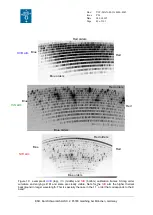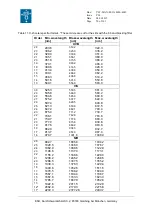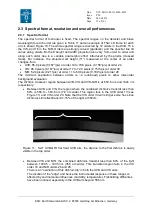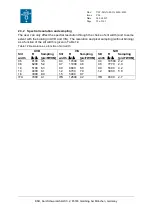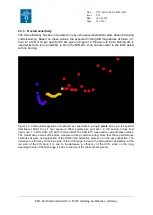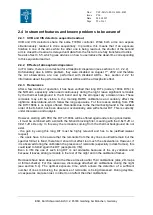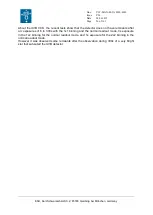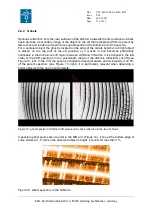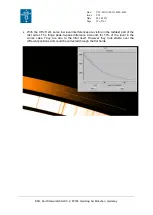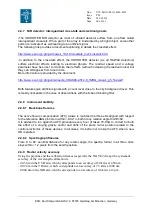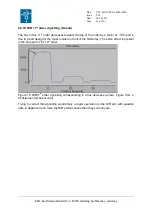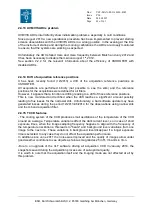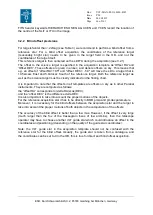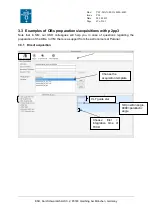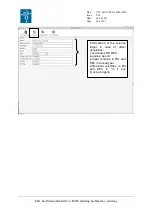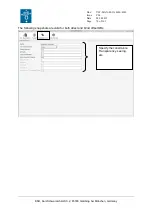
Doc:
Issue
Date
Page
VLT-MAN-ESO-14650-4942
P96
24.06.2015
55 of 161
ESO, Karl-Schwarzschild-Str. 2, 85748 Garching bei München, Germany
2.4 Instrument features and known problems to be aware of
2.4.1 UVB and VIS detectors sequential readout
UVB and VIS detectors share the same FIERA controller. While both arms can expose
simultaneously, readout is done sequentially. In practice, this means that if an exposure
finishes in one of the arms while the other one is being read out, the shutter of the second
arm is closed but readout is delayed until data from the first arm are fully transferred to disk.
See also Sect.3.5.5, which gives advices on how to use/reduce the dead-time corresponding
to this sequential readout.
2.4.2 Effects of atmospheric dispersion
In IFU mode, there is no correction for atmospheric dispersion (see sections 3.4.1, 2.2.2).
Unfortunately due to ADCs problem, they were disabled on August 1
st
, 2012 and therefore
the slit observations are now performed with disabled ADCs. See section 2.2.2 for
information about the performances without ADCs and the atmospheric effect.
2.4.3 Remanence
After a few months of operation it has been verified that long DITs (namely 1800s DITs) in
the NIR arm, especially when used continuously during the night, leave significant remnants
by the thermal background in the K band and by the strongest sky emission lines. These
remnants may still be visible in the morning DARK calibrations and certainly affect the
nighttime observations, which follow the long exposures. For this reason starting from P86
the DIT=1800s is no longer offered. Remnants due to the thermal background in the reddest
order of the K-band, has been observed, occasionally, also with shorter DIT. This is currently
under discussion and analysis.
However, starting with P90, the DIT of 1800s will be offered again under strong constraints:
- it must be combined with a slit with the K-band blocking filter, meaning with the 0.6x11JH or
0.9x11JH slits only. In this way the remnants coming from the thermal background do not
exist.
- the gain by using this long DIT must be highly relevant and has to be justified (waiver
request).
- the users have to be aware that the remnants from the sky lines could/will remain but the
spectral format is fixed, therefore it should not affect too much the observations. However, if
it is observed during the calibration the presence of remnants (especially in dark frames), this
could lead to forbid again this DIT (excepted in VM).
Even in VM the use of such long DIT is not advisable because of the sky variation and
because it leaves strong remnants in the rest of the night and in the calibration frames.
Remnants have been observed in the three arms also after ThAr calibrations (arcs, 2D-maps
or format-checks). For this reason we discourage attached arc calibrations during the night
(see section 6.4). The optimal exposure time, which allows the detection of a sufficient
number of lines minimizing the presence of remnants, is being discussed. During daytime,
arc exposures are taken last, in order to not affect the other calibrations.









